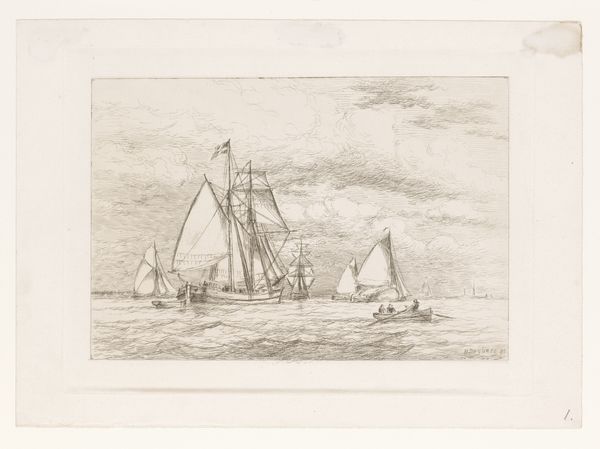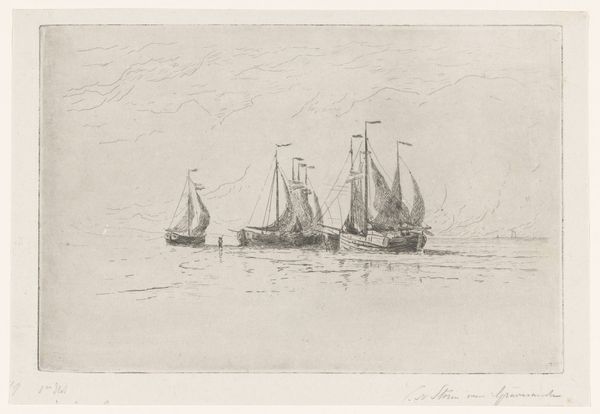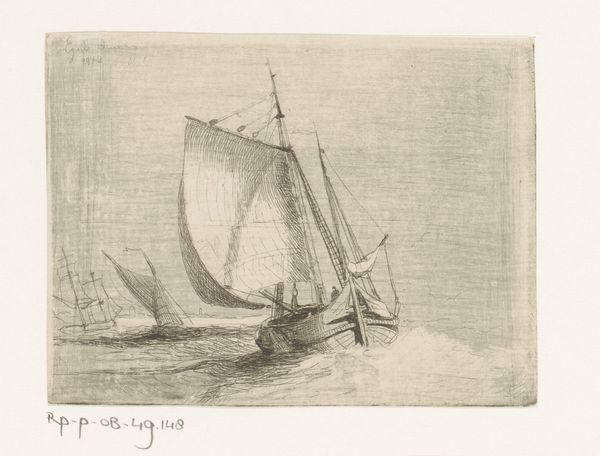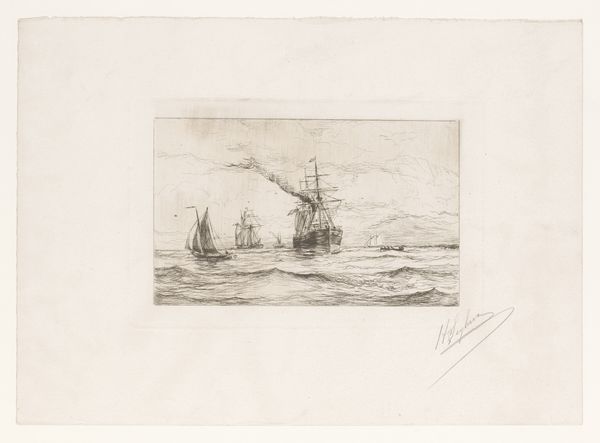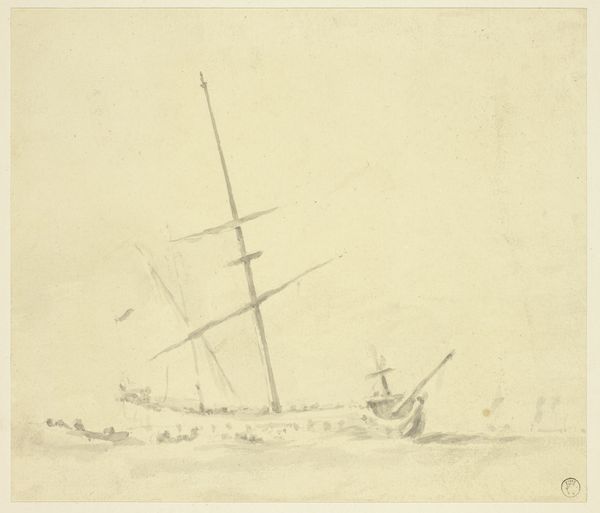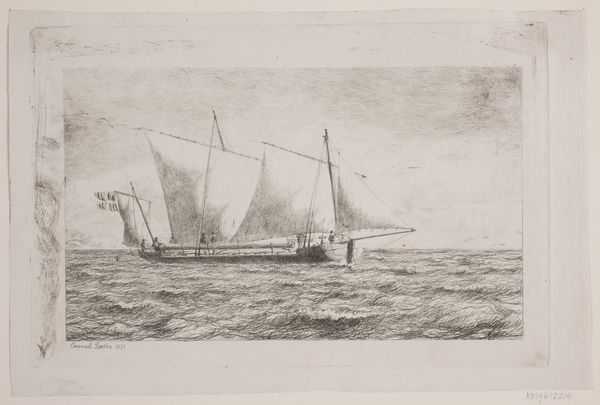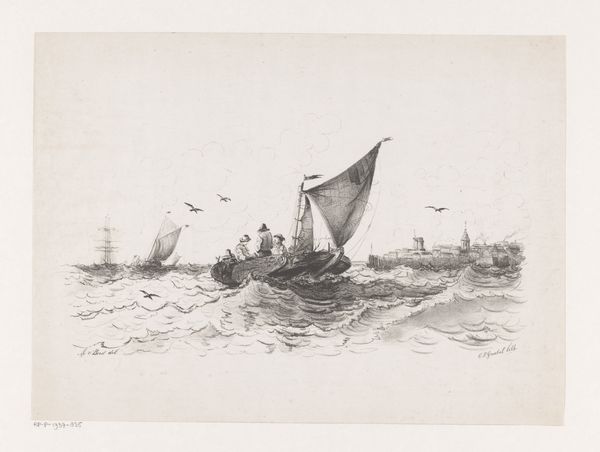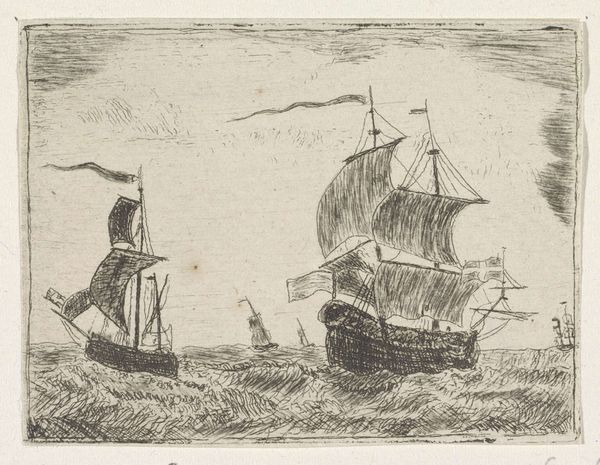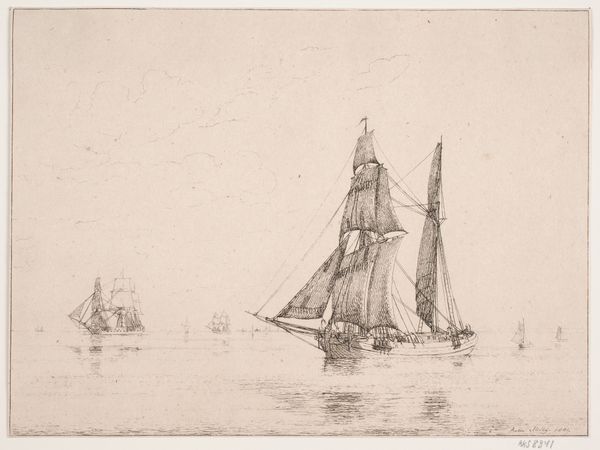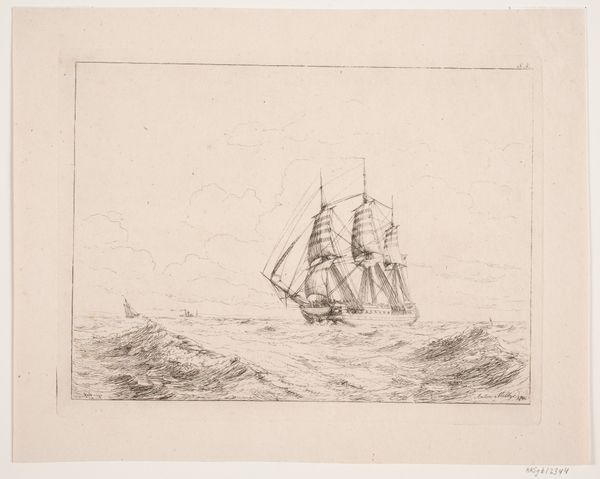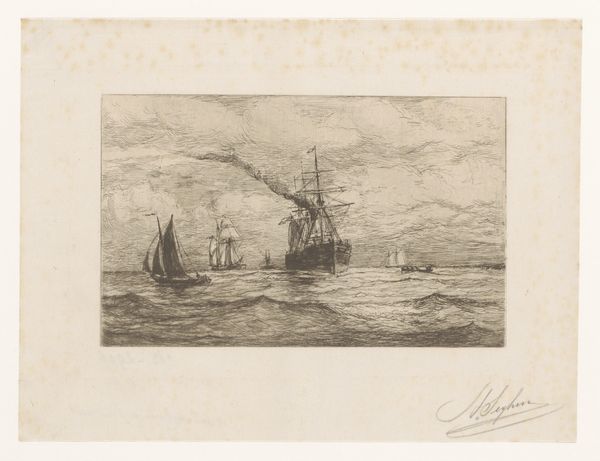
etching
#
etching
#
pencil sketch
#
landscape
#
etching
#
romanticism
#
realism
Dimensions: height 134 mm, width 195 mm
Copyright: Rijks Museum: Open Domain
Editor: This etching, "Zeilschip Walvisch uit Oostende op onrustige zee" created by Egidius Linnig in 1842, captures quite a dramatic scene. The rough sea is really the focus for me. How might this work speak to its viewers during that particular time? Curator: That's a great observation. Given the rising tides of nationalism in 19th-century Europe, seascapes were more than just pretty pictures; they could become potent symbols of a nation's power and reach. Look at the *Walvisch*, it isn’t idealized, it is dealing with rough waters, quite close to a capsized ship, if I am seeing correctly. It shows daily life and how vulnerable society was, and invites viewers to really empathize. How might the commercial maritime history impact such art? Editor: That makes perfect sense. The scene, almost looks chaotic. Was there something specific about that reality Linnig was trying to capture, aside from glorifying Belgium's might? Curator: Potentially. Romanticism really held sway, then and Linnig shows us raw emotion in the face of the immensity of nature. Maybe he sought to capture the inherent risks of seafaring, its social impact. It challenges viewers to see both the grandeur and the peril. The maritime activities formed a critical backdrop of daily existence in that era. Consider also where this etching would be displayed – in homes, print shops? Its audience impacts our understanding. How did the rise of print culture help shape views of naval prowess? Editor: That is an angle I hadn't considered. So this isn’t just about what Linnig wanted to say, but about how it engaged within broader conversations? Thank you! Curator: Exactly. It's about art functioning within a historical tapestry. Always look to the conversations surrounding the piece as much as to the piece itself!
Comments
No comments
Be the first to comment and join the conversation on the ultimate creative platform.

